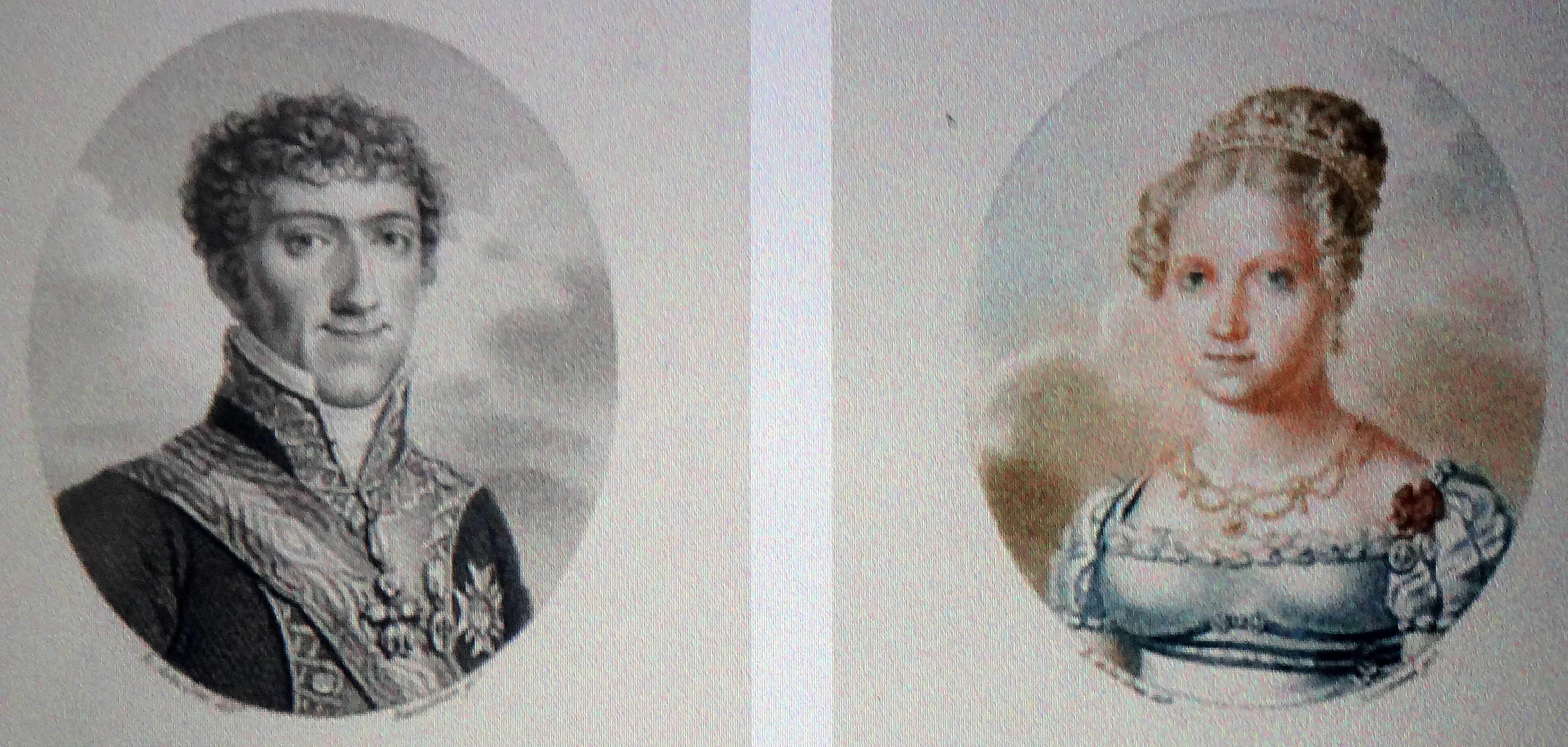Francisco de Asís war das dritte von elf Kindern seiner Eltern. Francisco de Asís hatte zwei Geschwister: Infante Francisco de Asís (1820–1821) und Infantin Isabel (1821–1897). Francisco de Paula und Luisa Carlotta bekamen nach der Geburt ihres zweiten Sohnes acht weitere Nachkommen. Diese Kinder waren: Infantin Enrique (1823-1870), Infantin Luisa (1824-1900), Infantin Duarte Felipe (1826-1830), Infantin Josefina (1827-1910), Infantin Teresa (1828-1829), Infantin Fernando (1832-1832). 1854), Infantin Maria Cristina (1833–1902) und Infantin Amalia (1834–1905). Wie sein älterer Bruder, der als Kleinkind starb, wurde Francisco de Asís nach dem Heiligen Franz von Assisi benannt.
 |
| Eine Medaille zur Erinnerung an die Hochzeit von Königin Isabel II. von Spanien und dem Infanten Francisco von Spanien |
On 10 October 1846 (the sixteenth birthday of the Queen), Infante Francisco de Asís of Spain was married at Madrid to Queen Isabel II of Spain, the first daughter of King Ferdinando VII and Queen Maria Cristina of Spain (née Two Sicilies). Francisco and Isabel were double first cousins: both were grandchildren of King Carlos IV and Queen Maria Luisa of Spain (née Bourbon-Parma) as well as grandchildren of King Francesco I and Queen Maria Isabella of the Two Sicilies (née Spain). It was well-known that the couple were ill-suited from the beginning: Isabel was a man-eater and Francisco de Asís was not manly. In Madrid, famous for cutting sobriquets, Francisco de Asís was known as “Paquita,” a diminutive of “Francisca.” Spanish historians have argued that the bride was more interested in marrying her groom’s bother, Infante Enrique, a virile, swashbuckling young man who seemed better suited to the wedding bed than his older bother. Reluctantly, Queen Isabel II and Infante Francisco de Asís entered into holy matrimony in a joint wedding ceremony alongside the queen’s sister Infanta Luisa Fernanda (1832-1897) and Prince Antoine d’Orléans, Duke of Montpensier (1824-1890), the son of King Louis Philippe and Queen Marie-Amélie of the French. There had been much international debate about which royal prince should be wed to which of the two sisters. Queen Isabel certainly drew the shorter straw when she wound up with her effete cousin Francisco, while Infanta Luisa was considered far more lucky in getting the Duke of Montpensier. The French monarch’s hope centered on Francisco de Asís being unable to procreate any children, thus the crown passing to the offspring of Montpensier and Luisa Fernanda. Queen Isabel’s prodigous sexual appetite, which she satisfied by welcoming countless men to her bed chamber, ensured her one would retain the Spanish throne.
 |
| King Consort Francisco de Asís of Spain |
During the course of the union of Queen Isabel II and King Consort Francisco de Asís, she gave birth countless times. Very few of her children shared the same father. However, of Queen Isabel II’s many offspring, only five children reached adulthood. The first to arrive was Infanta Isabel (1851-1931), who married her mother’s and father’s first cousin Prince Gaetan of the Two Sicilies, Count of Girgenti. Infanta Isabel, quite possibly a lesbian, became a widow at a young age due to her husband’s suicide. She never remarried, but her Madrid palace witnessed a long line of lady companions. Next to appear was the only surviving son, the future King Alfonso XII of Spain (1857-1885), who went on to marry twice. His first wife was Infanta María de las Mercedes, one of the many children of Montpensier and Luisa Fernanda. However, the beloved queen died of tuberculosis just months after their wedding. Alfonso XII’s second wife was Archduchess Maria Christina of Austria (1858-1929), who served as regent during the childhood of the king’s posthumous son, Alfonso XIII. The third child and second daughter, Infanta María del Pilar (1861-1879), came next; she was considered as a bride for the Prince Imperial, son of Emperor Napoléon III and Empress Eugénie of the French. The fourth child and third daughter, Infanta María de la Paz (1862–1946), then made her appearance; Paz married her first cousin Prince Ludwig Ferdinand of Bavaria (1859-1949), son of Infanta Amalia (a sister of Francisco de Asís) and Prince Adalbert, youngest son of King Ludwig I and Queen Theresa of Bavaria. Finally, and lastly, Infanta Eulalia (1864-1958) arrived and completed the family unit; Eulalia wed her cousin Infante Antonio, Duke of Galliera (1866-1930). Theirs was a disastrous marriage that caused the royal family much angst. Their two sons, Alfonso and Luis Fernando, suffered greatly by the marital turmoil of their parents. Alfonso, known as “Ali” within the family circle, made a splendid marriage to Princess Beatrice of Edinburgh, a granddaughter of Queen Victoria. As for Luis Fernando, he was a walking mess…well-known for his homosexual escapades, and alcohol and drug-induced debauchery, he eventually went through his fortune. Left with few options, he married Princess Marie de Broglie (née Say), a wealthy widow whose fortune Luis Fernando dealt a death blow to.
 |
| Infanta Isabel of Spain and Prince Gaetan of the Two Sicilies |
 |
| King Alfonso XII and Queen Maria Cristina of Spain (née Austria) |
 |
| Infanta Pilar of Spain |
 |
| Infanta Paz of Spain and Prince Ludwig Ferdinand of Bavaria |
 |
| Infanta Eulalia of Spain, Duchess of Galliera |
1833 wurde Isabel II. im Alter von drei Jahren nach dem Tod ihres Vaters Königin von Spanien. 1868, nach 35 Jahren auf dem Thron, dankte Isabel II. im Zuge der Glorreichen Revolution ab. Die Königin, der Königsgemahl und die königlichen Kinder gingen ins Exil nach Frankreich. 1870 trennten sich Isabel und Francisco in gutem Einvernehmen. Der einzige überlebende Sohn, Alfons XII., regierte von 1874 bis zu seinem frühen Tod 1885 als König von Spanien.










.jpg)







No comments:
Post a Comment